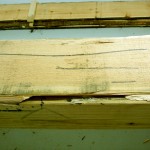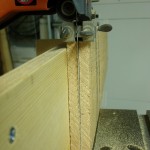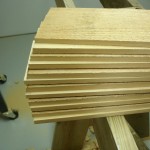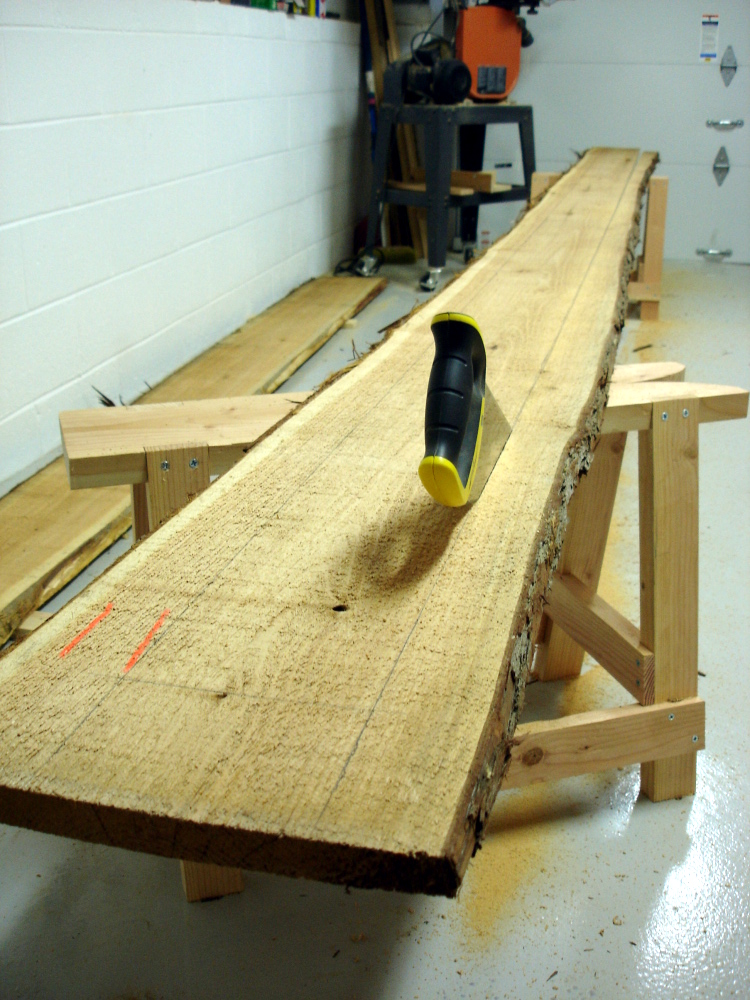That stange looking thing I’ve been using as a workbench is actually the building horse for the Fiddlehead canoe. Once enough frame parts are ready, they’ll be set up on the building horse. Then, what will I use for a workbench?
Chris Schawarz’s “Workbenches…” book is a winner. As a cabinet maker and writer about woodworking, he has made a number of workbenches. The unique thing about his book is a chapter in which he analyzes almost any woodworking task imaginable and classifies all the ways a bench might handle them. This analysis ends up with plans for two benches, one built incredibly heavy and perfect for cabinet makers, the other lighter and originally used by for 19th century joiners. This lighter bench, which Chris calls the “English” bench, looks ideal for boat building work. The most appealing feature is the ability to clamp long boards to the face aprons, enabling the kinds of edge working that is prevalent in boat building.
All I need is to make it longer. One can never have a bench that’s too long. I’m planing for 12 feet. Extending the length requires some longer lumber and an extra pair of legs.
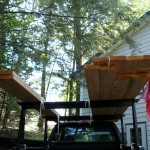 Chris suggests building benches from construction lumber. After all, these are workbenches, not grand pianos, we’re building. He uses southern yellow pine, very hard softwood that’s availalble where Chris lives. The examples in his book show beautiful wood that is clear and knot free. Not here. I have load of “green Douglas fir,” the next best alternative in this part of the country. As an aside, the lumber is sold green (high moisture content) because it is intended for house framing. If a framer uses it immediately, the joins become tighter as the lumber dries. Some of what I bought is still very green and very heavy. It was a good load test for the truck rack and for my knot tying.
Chris suggests building benches from construction lumber. After all, these are workbenches, not grand pianos, we’re building. He uses southern yellow pine, very hard softwood that’s availalble where Chris lives. The examples in his book show beautiful wood that is clear and knot free. Not here. I have load of “green Douglas fir,” the next best alternative in this part of the country. As an aside, the lumber is sold green (high moisture content) because it is intended for house framing. If a framer uses it immediately, the joins become tighter as the lumber dries. Some of what I bought is still very green and very heavy. It was a good load test for the truck rack and for my knot tying.
Yeah, this puts the Fiddlehead build into limbo for a while.
